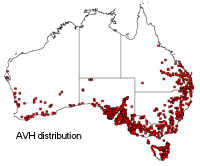
Dianella Congesta
Common name: Flax lily
I grow best: Frost & drought tolerant once established
• Full sun/ part shade
• Grows up to height 1m and width 1.5m
• Flowers – Spring to Summer
• Adapts to most sandy soils, attracts bees birds and butterflies
• Cultural uses
• Eastern Suburb Banksia Scrub
Looks like: A clumping lily-herb with rhizomes to 20 cm long, forming mats, usually with inflorescences within the foliage, rising to about 1 metre tall. Produce their leaves on a buried condensed rhizome, with some species exhibiting aerial stems with alternate to clustered leaves. In this species, the leaves are arranged alternately on opposite sides of aerial stems, appearing clustered, to 45 cm long, and to 2 cm wide, mid-green to lighter green. The bases of leaves are occluded – a feature where the two halves of the upper side of every leaf are folded lengthwise and seemingly glued together – a useful identification feature for this species combined with habitat (especially when it is not in flower).produce flowers on elevated inflorescences, usually above the foliage, which are described as cymose but have a panicle-like appearance. The individual flowers are blue to violet and are arranged in branches on the main axis. Flowers are bisexual with six tepals (three sepals and three petals which are almost identical – a typical lily-characteristic) and a superior ovary.
In this species, the inflorescence does not really exceed the height of the foliage, with flowers mid- to dark blue, about 15 mm across, occurring in spring–summer. The stamens have yellow filaments and yellow-brown anthers. Produce berries, usually purple in colour. In this species, the fruit is fleshy, blue to purple, to 12 mm in diameter.
Habitat & Growing: This species is restricted in the wild to coastal habitats where, because of its matting characteristics, it is a very effective sand-binder. However, it grows readily in cultivation and has been planted extensively. It is very useful in places such as road-roundabouts and street gardens and similar council landscapes. It has a mainly coastal-fringe occurrence, growing as far south as Potato Point on the south coast of NSW, north into Queensland, as far north as around mainly Bundaberg but with a few disjunct records near Cairns and Cape York.It grows in dry sclerophyll woodland and shrubland on coastal sand dunes. Sometimes a dominant understorey species, it can form large spreading colonies.
This plant is horticulturally desirable because once it is established it is very hardy and has a wide moisture and temperature range excluding inland extremes. It is drought and frost resistant, is generally trouble-free and is grown for its distinctive strappy foliage as well as for its flowers and fruits. Provides long periods of interest in gardens looking decorative with its compact, clumping and evergreen foliage. It is suitable for most soils, but prefers a well drained soil enriched with leaf mould and compost, and accepts part or full shade. It looks best in mass planting and makes a lovely understorey plant while adding texture. It is suitable for most rockeries and can be grown as a border or just adding quality to the bushland garden. Birds including parrots are also attracted by the fruit.
Propagation can be either from the ripe seed collected by hand and sown in spring or by the division of rhizomes which can be struck in moist shady conditions in light soil during cooler months in later winter. When young it is advisable to water plentifully. Fertilizing with blood and bone or a slow release fertilizer in spring encourages healthier plants and removing the old brown leaves is the only maintenance that is required for this plant.
Distribution: This species is restricted in the wild to coastal habitats where, because of its matting characteristics, it is a very effective sand-binder.

Traditional uses: Dianella has sweet purple berries, Aboriginal people consumed these during the summer months. The strappy leaves were also suitable for weaving for the production of nets, bags and other materials. The plant was also used as a snake whistle. It could be blown into the hollow ends to create vibrations and sound to lure snakes out of hiding which then were hunted for food.

